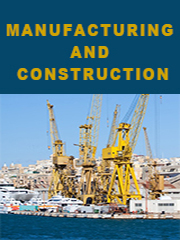Report overview
An assembly automation system is a dedicated system utilizing mechanized and automated devices for producing goods and performing various functions in an assembly line. Its basic functionality is an organized approach of assembling goods which is partly automated and partly controlled by humans. For this purpose, automated assembly system performs a series of automated operations for combining multiple components into a single unit which can be used as a final product or sub assembly. Generally, automated machinery is used to produce products in which standard components or parts are added in a definite sequence of events along what is commonly called an assembly lines. Automated assembly system forms an integral part of the process in many technical organizations, manufacturing industries, medical research, clinical companies, etc. Some of the advantages of assembly process from a conventional automation systems are in terms of labor savings, consistency of input and output, capability to handle multiple tasks so as to meet demands of a manufacturing process, better reliability and profitability through higher production rate. Assembly automation is the application of robotics, software, digitalized data, and plant design engineering to manufacturing processes in order to minimize manual labor requirements while maximizing efficiency, safety, and output. Advancements in industrial automation technologies such as artificial intelligence, machine vision, complex robotics and other controls are making automated assembly more flexible, efficient and rapid than ever before.
This report aims to provide a comprehensive presentation of the global market for Assembly Automation, with both quantitative and qualitative analysis, to help readers develop business/growth strategies, assess the market competitive situation, analyze their position in the current marketplace, and make informed business decisions regarding Assembly Automation. This report contains market size and forecasts of Assembly Automation in global, including the following market information:
Global Assembly Automation Market Revenue, 2018-2023, 2024-2029, ($ millions)
Global top five companies in 2022 (%)
The global Assembly Automation market was valued at US$ 54260 million in 2022 and is projected to reach US$ 94380 million by 2029, at a CAGR of 8.2% during the forecast period. The influence of COVID-19 and the Russia-Ukraine War were considered while estimating market sizes.
Global Assembly Automation key players include ABB, FANUC, Siemens, etc. Global top three manufacturers hold a share about 14%. Asia Pacific is the largest market, with a share about 55%, followed by Europe and North America, both have a share over 41 percent. In terms of product, Robot Automation Equipment is the largest segment, with a share over 78%. And in terms of application, the largest application is Automobile, followed by 3C Industry, etc.
We surveyed the Assembly Automation companies, and industry experts on this industry, involving the revenue, demand, product type, recent developments and plans, industry trends, drivers, challenges, obstacles, and potential risks.
Total Market by Segment:
Global Assembly Automation Market, by Type, 2018-2023, 2024-2029 ($ millions)
Global Assembly Automation Market Segment Percentages, by Type, 2022 (%)
Robot Automation Equipment
Other Automation Equipment
Central Control System
Global Assembly Automation Market, by Application, 2018-2023, 2024-2029 ($ millions)
Global Assembly Automation Market Segment Percentages, by Application, 2022 (%)
Automobile
3C Industry
Metal Industry
Medical
Others
Global Assembly Automation Market, By Region and Country, 2018-2023, 2024-2029 ($ Millions)
Global Assembly Automation Market Segment Percentages, By Region and Country, 2022 (%)
North America
US
Canada
Mexico
Europe
Germany
France
U.K.
Italy
Russia
Nordic Countries
Benelux
Rest of Europe
Asia
China
Japan
South Korea
Southeast Asia
India
Rest of Asia
South America
Brazil
Argentina
Rest of South America
Middle East & Africa
Turkey
Israel
Saudi Arabia
UAE
Rest of Middle East & Africa
Competitor Analysis
The report also provides analysis of leading market participants including:
Key companies Assembly Automation revenues in global market, 2018-2023 (estimated), ($ millions)
Key companies Assembly Automation revenues share in global market, 2022 (%)
Further, the report presents profiles of competitors in the market, key players include:
ABB
FANUC
Siemens
Yaskawa
Emerson
Kuka
Rockwell Automation
D?rr Group
St?ubli International
SCHUNK
Universal Robots
Epson
Estun Automation
CSG
Manz
Outline of Major Chapters:
Chapter 1: Introduces the definition of Assembly Automation, market overview.
Chapter 2: Global Assembly Automation market size in revenue.
Chapter 3: Detailed analysis of Assembly Automation company competitive landscape, revenue and market share, latest development plan, merger, and acquisition information, etc.
Chapter 4: Provides the analysis of various market segments by type, covering the market size and development potential of each market segment, to help readers find the blue ocean market in different market segments.
Chapter 5: Provides the analysis of various market segments by application, covering the market size and development potential of each market segment, to help readers find the blue ocean market in different downstream markets.
Chapter 6: Sales of Assembly Automation in regional level and country level. It provides a quantitative analysis of the market size and development potential of each region and its main countries and introduces the market development, future development prospects, market space of each country in the world.
Chapter 7: Provides profiles of key players, introducing the basic situation of the main companies in the market in detail, including product sales, revenue, price, gross margin, product introduction, recent development, etc.
Chapter 8: The main points and conclusions of the report.
